In the Eastern part of the densely wooded island of EIL Malk, part of the archipelago of Rocky Islands (the state of Palau) is an amazing marine lake, in which lives a huge number of jellyfish. And jellyfish living here only two types: gold and moon.
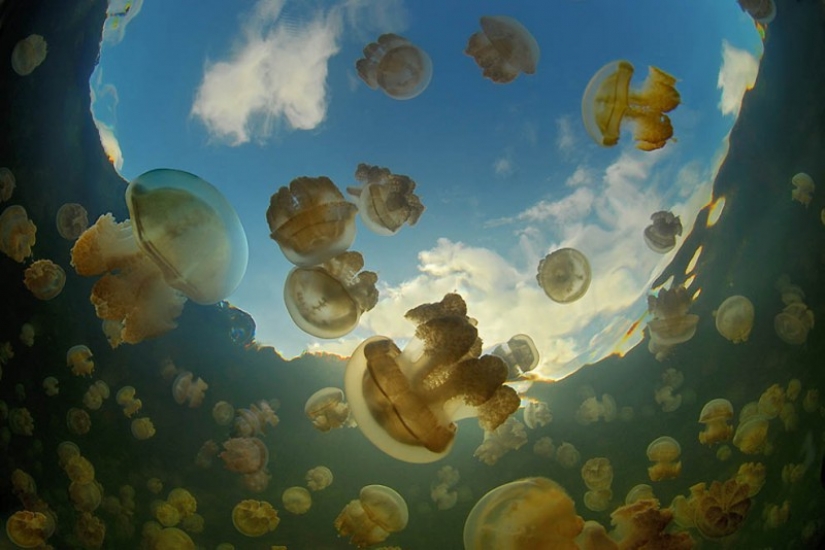
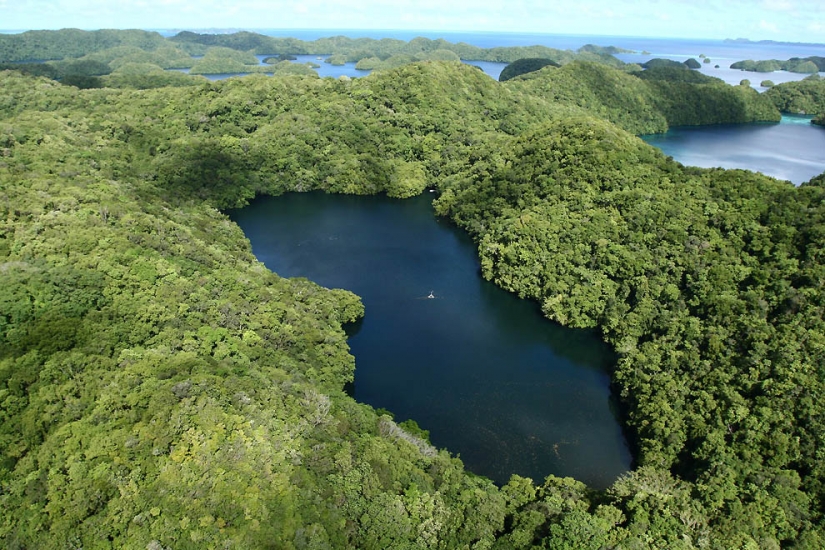
The water in the Jellyfish Lake is salty, the lake is connected with the Pacific ocean by a network of cracks and three small tunnels running through the surrounding limestone. However, the inhabitants of the lake is completely isolated from the ocean, and the living conditions in the lake are quite unlike the ocean.
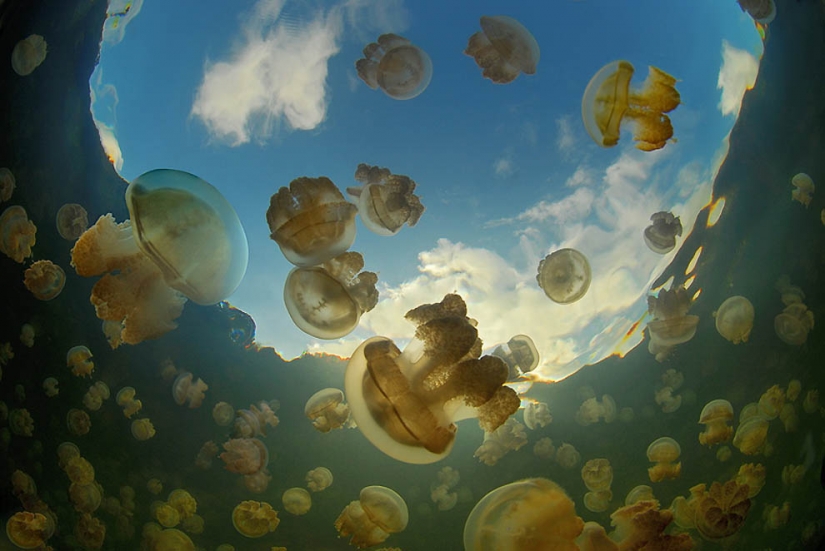
So Golden and moon jellyfish that inhabit the lake are very different from their relatives that live in the ocean lagoon, only 200 meters from them.
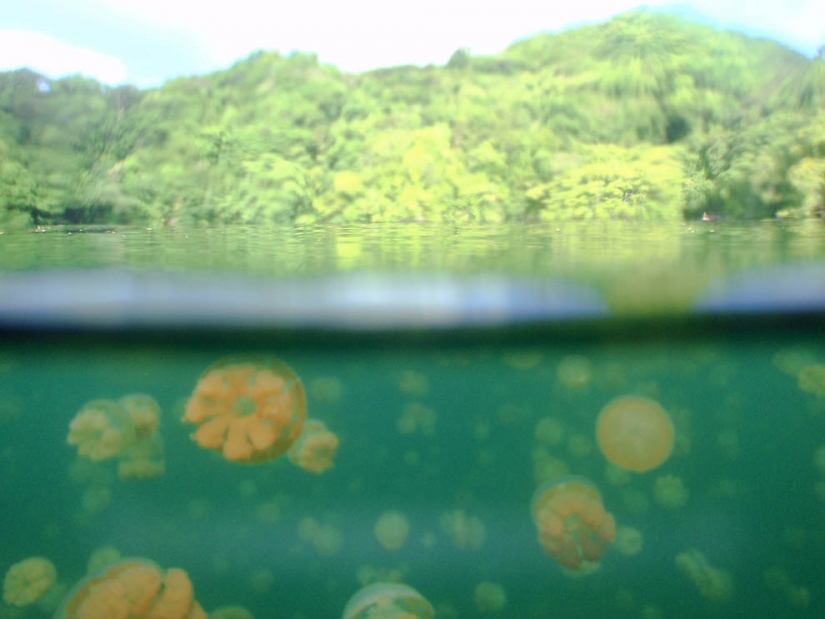
In the Lake of Jellyfish in the absence of their natural predators jellyfish have multiplied to incredible numbers. Now the lake covers an area of only 0,057 sq km and a depth of about 50 m, inhabited by nearly 2 million jellyfish.
The number of jellyfish is so large that their mass can be readily seen, even in the plane. These jellyfish almost completely lost the ability to defend themselves, as over time they have disappeared stinging cells. Diving enthusiasts can safely swim in the lake and enjoy the jellyfish without fear of getting a nasty burn.
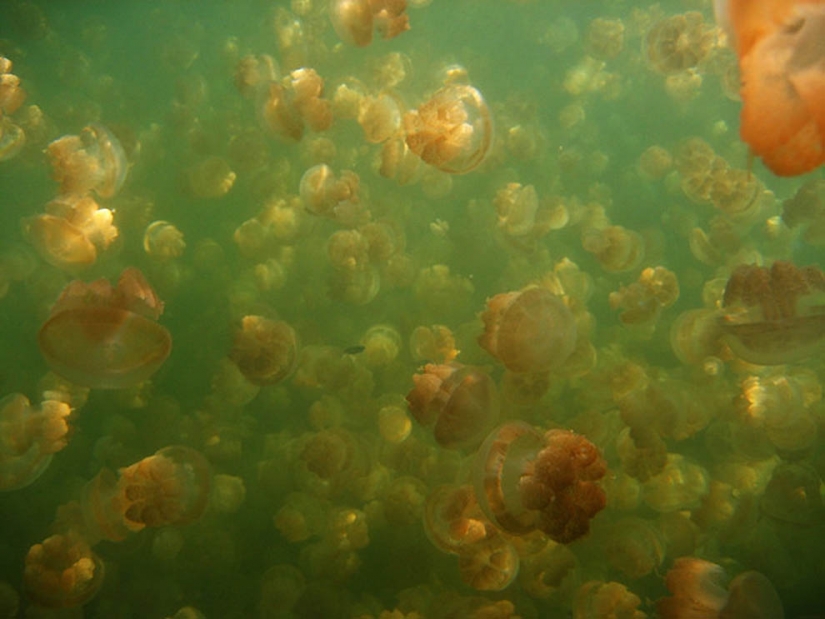
The most numerous inhabitants of the lake are Golden jellyfish. Unlike their closest relatives, which live in the ocean, lake, Golden jellyfish lost and age spots, and almost completely lost the ability to sting. There are also other differences in the body structure, so some biologists even propose to highlight the Golden jellyfish living in the lake, in a separate subspecies.
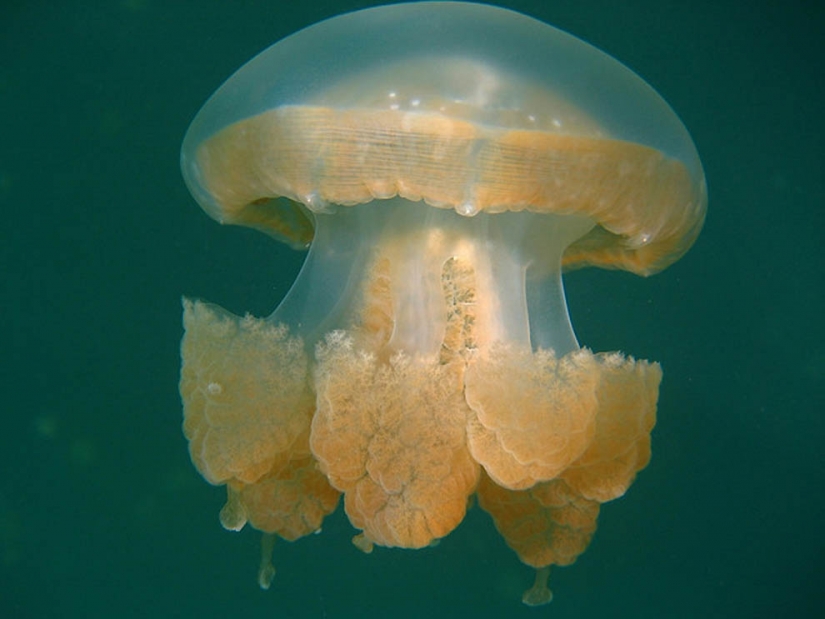
The water in the Jellyfish Lake is clearly divided into two layers – top and bottom. The oxygen content in the upper layer are much greater than in the lower. At a depth of 15 m, the oxygen content in water decreases to zero. The upper and lower layers of water in the lake never mix. The tunnels that the lake connects with the ocean provide the inflow of a small amount of fresh water in the upper layer of the lake.
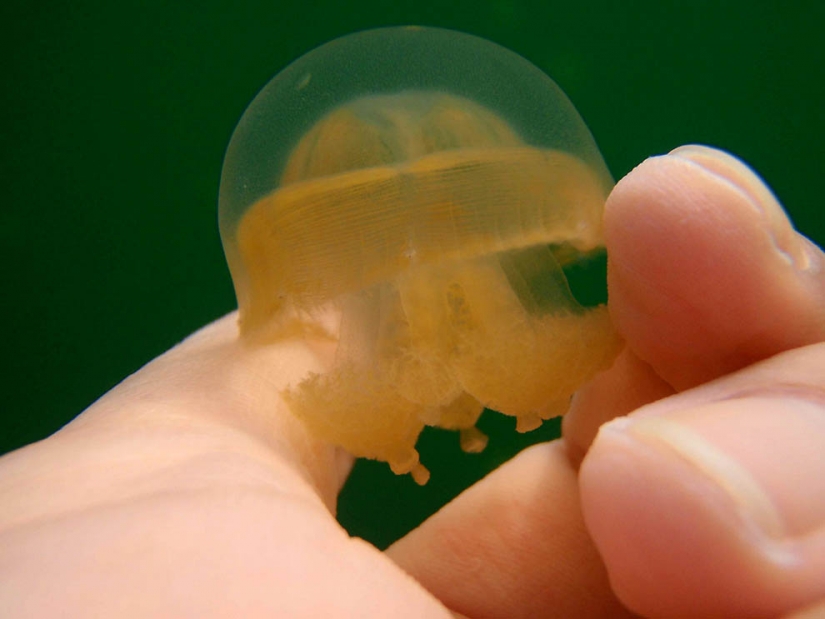
Thus, all the jellyfish and other animals living in the lake, are forced to live only in the upper layer of water. In the lower anoxic layer of water can survive only a few species of bacteria. The water of the lower layer is so strongly saturated with hydrogen sulfide, ammonia and phosphates, which poses a risk for divers, as people in this solution, can get serious poisoning directly through the skin.
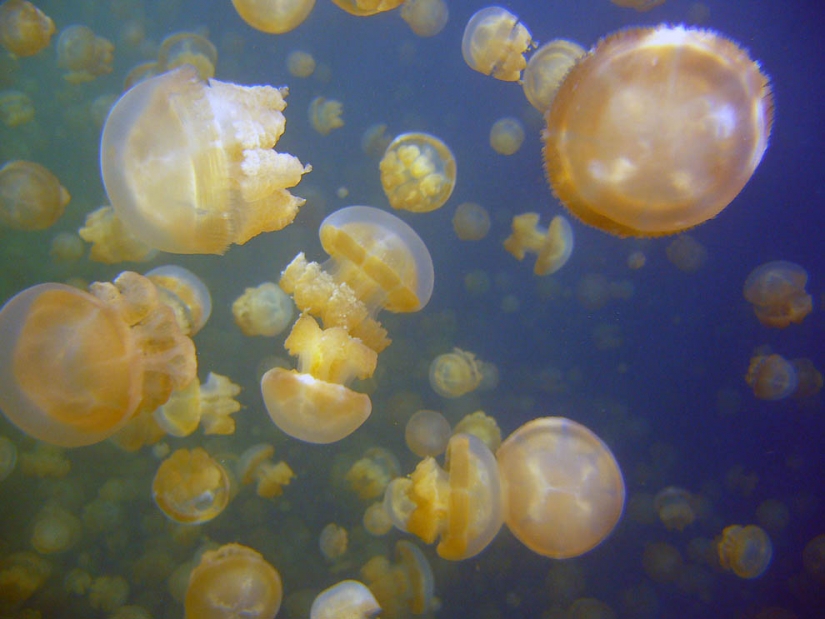
Jellyfish need oxygen, so they can only live in the upper layer of Lake water Jellyfish. However, jellyfish every day make rhythmic migration, both in horizontal and in vertical direction, falling almost to the border of the oxygen-containing layer.
Migration of the Golden jellyfish are particularly organized. All night and until two o'clock in the afternoon jellyfish rhythmically rise and fall in the surface layer of water. Come morning the jellyfish out of the West part of the lake and going on the East side. In the middle of the day they're back in the Western part of the lake. When jellyfish swim near the surface of the water, they rotate counterclockwise. There have been suggestions that the way jellyfish provides uniform illumination of its symbiotic algae that live in her body and provide her with extra food.
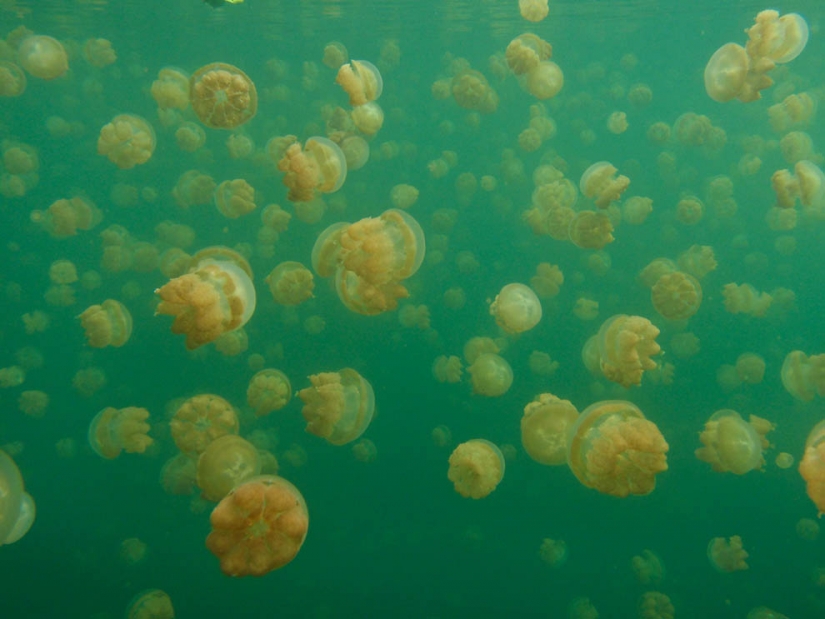
Moon jellyfish move is not as organized and orderly as gold, but their migration is also widespread. Night moon jellyfish spend at the water surface, where they catch copepods.
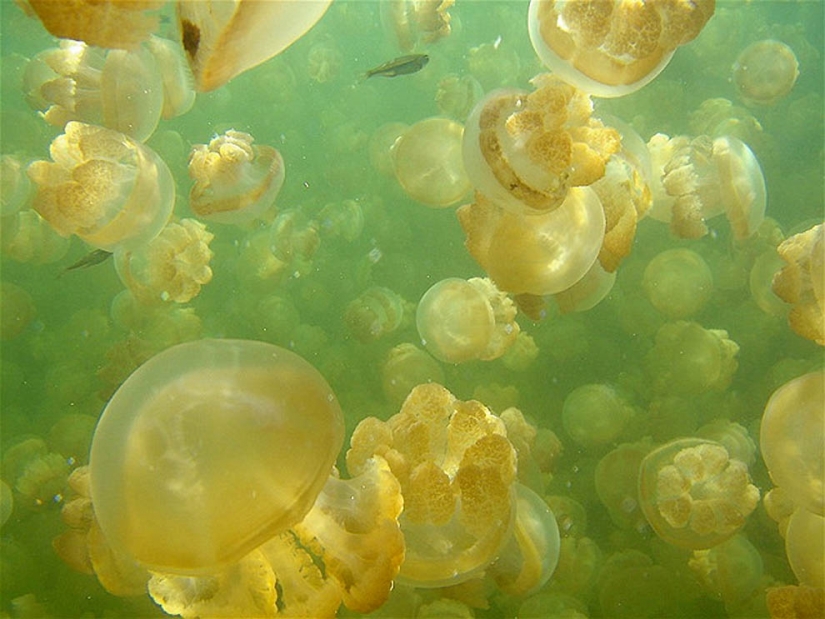
Some biologists have suggested that the migration of jellyfish between the Eastern and Western parts of the lake associated with sea anemones Entacmaea medusivora, which feed on jellyfish. These anemones live on the Eastern shore of the lake. Medusa try to avoid the shadows and stay in the light. Following the maximum of the illuminated area, they can do to avoid dangerous for them Actinia.
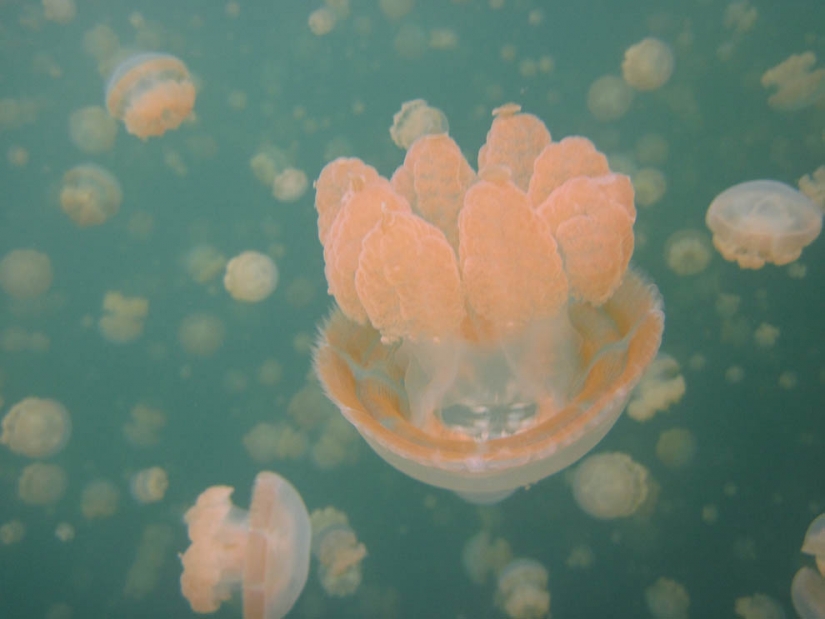
In 1998, the Jellyfish Lake was almost completely lost its main inhabitants – the Golden jellyfish. By December 1998, their numbers in the lake dropped almost to zero. I believe that such a sharp decrease in population was due to the influence of powerful phase of the phenomenon El niño, during which there is a redistribution of huge masses of warm water from the surface layer of the ocean.
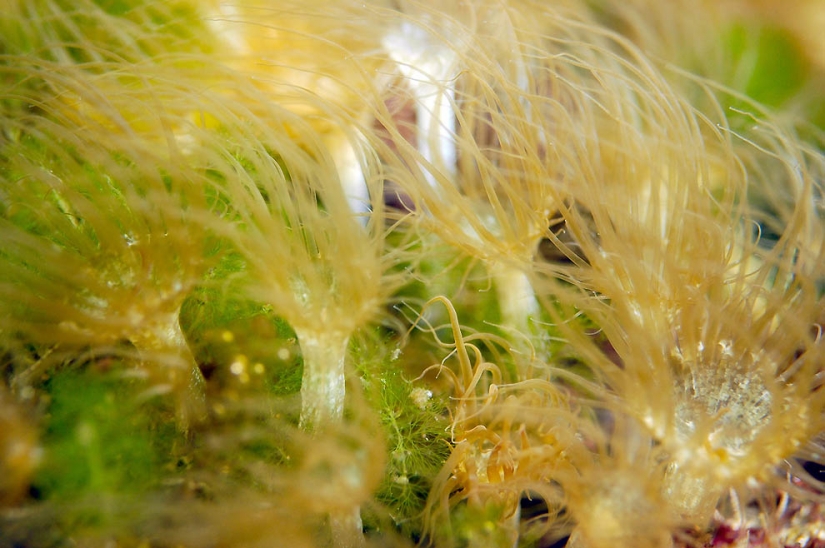
In the result of El niño the water temperature in the lake has greatly increased, that killed the symbiotic algae, without which the jellyfish can not survive. In 1999, the lake could not find any gold jellyfish, but in January 2000 they again began to appear, and today their population is fully recovered.
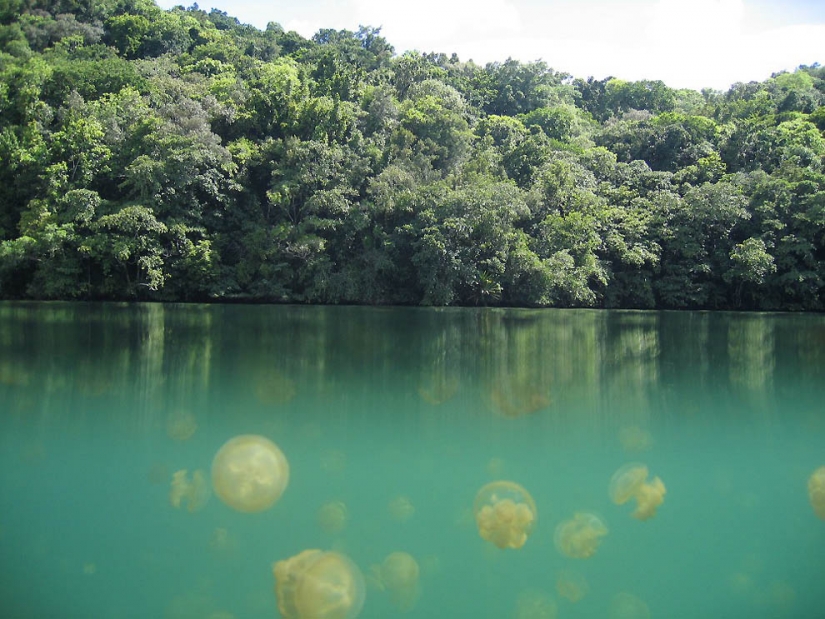
Picturesque clusters of jellyfish are attracted to the lake a lot of tourists and lovers of scuba diving. Swim among the jellyfish lake is quite safe, as they almost completely lost the ability to "bite". But people with sensitive skin or suffer from allergies, it is recommended that when diving, use of protective suits. Diving in jellyfish lake is permitted only with a mask and snorkel, and to enjoy diving is prohibited.
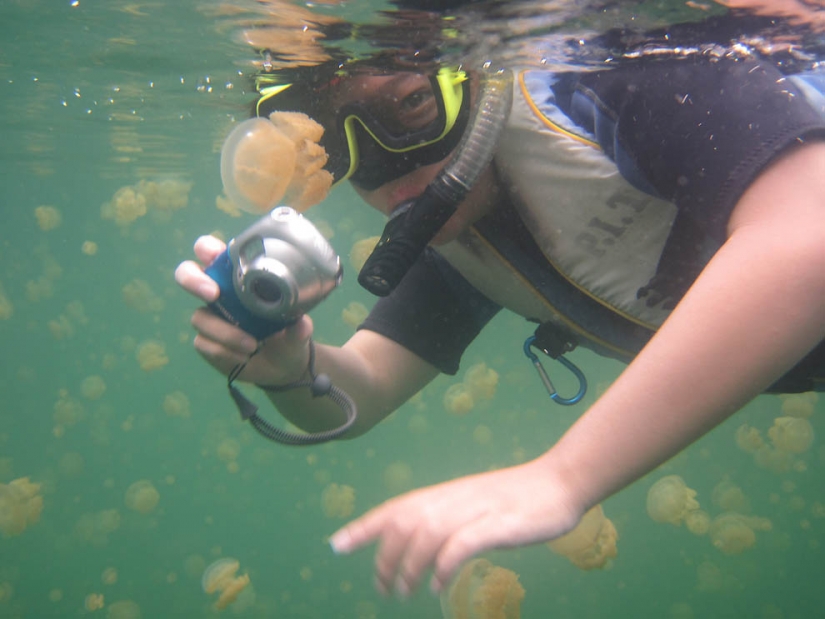
Scuba is prohibited for two reasons: first, the air bubbles from scuba fall under the dome of the jellyfish, why they may die; second, the scuba gear allows people to dive to a depth of 15 meters, where the oxygen-free layer.
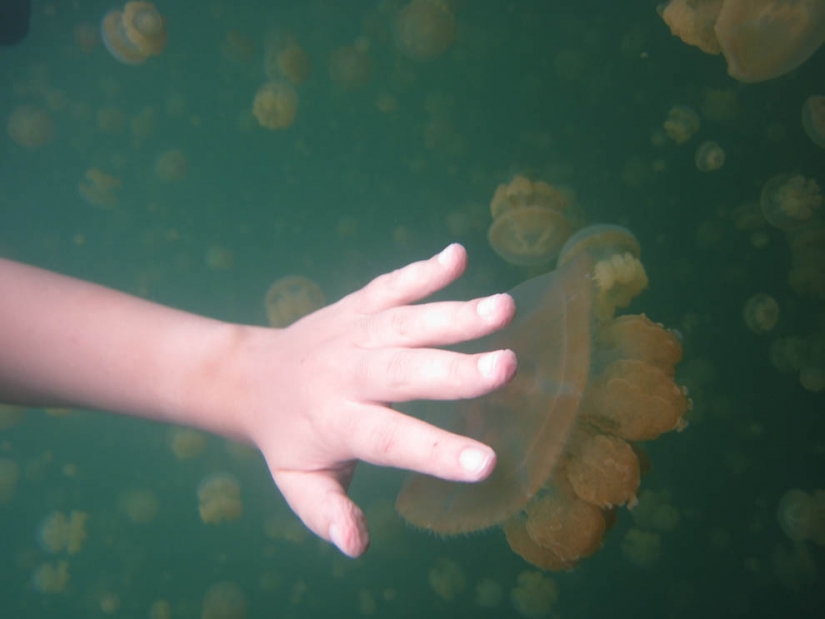
The massive dip in the bottom layer of the lake is bound to cause mixing of the upper and lower layers of water (which under natural conditions never occurs), and all the lake ecosystem will be irreversibly broken, resulting in the death of all its inhabitants. In addition, a careless diver can obtain a lethal poisoning through the skin, while in the lower layer of water saturated with hydrogen sulfide and ammonia.
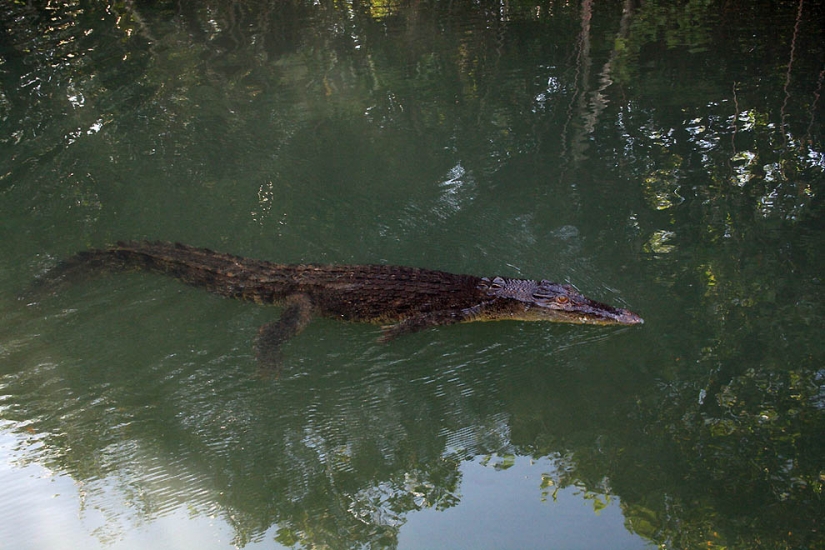
Of all the inhabitants of the lake is a real danger for tourists may be estuarine crocodiles. But they prefer to stay away from people, and all the time it was only one attack was fatal.
Keywords: Archipelago | Forest | Jellyfish | Lake | Island | Palau
Post News ArticleRecent articles

Aerial photographer cronista johnny Miller demonstrate dramatically the gap between rich and poor in cities of South Africa, Mexico ...

Jodhpur — second largest city of Rajasthan, India. Until the mid XX century served as the capital of Marwar Raja. It rarely ...
Related articles

The forest often seems to be something eerie and mysterious. No wonder the world's folklore is full of stories about how poor ...

Madeira island is known for its picturesque landscapes, rugged mountains, volcanoes and rocky beaches. But one of the most unique ...

This is a series of" House in the Woods " by photographer Kai Fagerstrom. He captured the magical communities of wild animals ...

We present you a selection of amazing beaches — but today these are not standard holiday destinations, but really unusual places. ...